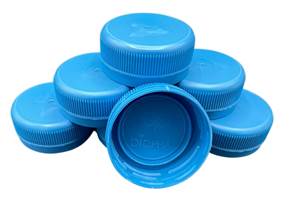Housing Weakens
Construction is growing but overall housing recovery still a ways off.
The total construction market, which includes residential and non-residential, private and public, improved significantly in the first quarter of 2014. The value of construction put in place grew by at least 7% compared with one year ago in each of the first three months of this year. This is nearly the fastest month-over-month growth in construction spending since the recovery in the market began in early 2012. Stronger monthly growth has led to accelerating growth in the annual rate of change in each of the last three months.
A good leading indicator for the total construction market is real consumer spending. In March 2014, real consumer spending increased by 2.9% compared with March 2013. This rate of growth is approaching the historical average for consumer spending (3.3%) for the first time since early 2011. While the gains are small, the annual rate of change in real consumer spending has been accelerating since September 2013.
Typically, changes in real consumer spending lead changes in real construction spending by a couple of months. And relatively small changes in consumer spending lead to noticeably larger changes in construction spending. The current trend in consumer spending indicates that construction spending should continue to grow at an accelerating rate for at least the next few months (see graph). The acceleration in construction spending will last even longer if consumer spending continues its accelerating growth. At the moment, this appears likely since real disposable income is growing faster than it has in some time.
While total construction spending is growing at an accelerating rate, the housing market is moving in the other direction. The housing market is still growing, but at a much slower rate. From August 2011 to July 2013, the month-over-month rate of growth in housing permits was well into double digits every month except two. But from August 2013 to March 2014, the month-over-month rate of growth in housing permits was in the single digits in five of the eight months. Therefore, the annual rate of change in housing permits has been cut in half.
Total household debt, which is made up mostly of mortgage debt, is still $700 billion below its peak in June 2008. Household debt as percent of GDP has fallen in almost every quarter since it peaked in the second quarter of 2009. These statistics would be even worse if it weren’t for the dramatic increase in student loan debt during this same period. In fact, in the former bubble markets, it has been large investment firms and hedge funds buying up residential properties to rent them that have played a primary role in the recovery of housing. Now, these firms are cutting back their purchases of real estate by up to 70%. Hence, prices in these markets are starting to fall once again.
Another concern regarding the housing market is that the growth is currently in homes with sale prices of more than $1 million. In March, purchases of homes in this price range increased by 7.8%. However, purchases of homes worth less than $250,000 declined by 12.0%. This isn’t too surprising when we consider the wealth of the upper income brackets has increased more than the bottom income brackets during this recovery.
The recovery in the housing market seems to have been driven by isolated actors instead of driven by broad-based action. Therefore, it is likely that housing market will continue to see decelerating growth, and perhaps contraction, until the underlying fundamentals of prices, incomes, and household formation reach a point that a broad-based recovery can begin.
Related Content
US Merchants Makes its Mark in Injection Molding
In less than a decade in injection molding, US Merchants has acquired hundreds of machines spread across facilities in California, Texas, Virginia and Arizona, with even more growth coming.
Read MorePHA Compound Molded into “World’s First” Biodegradable Bottle Closures
Beyond Plastic and partners have created a certified biodegradable PHA compound that can be injection molded into 38-mm closures in a sub 6-second cycle from a multicavity hot runner tool.
Read MorePaperless ‘Smart Factory’ Based on Automated Production Monitoring
Tier 1 automotive molder’s home-built production-monitoring and ERP systems, designed for “the little guy,” boost its efficiency rating and profits.
Read MoreImpacts of Auto’s Switch to Sustainability
Of all the trends you can see at NPE2024, this one is BIG. Not only is the auto industry transitioning to electrification but there are concerted efforts to modify the materials used, especially polymers, for interior applications.
Read MoreRead Next
For PLASTICS' CEO Seaholm, NPE to Shine Light on Sustainability Successes
With advocacy, communication and sustainability as three main pillars, Seaholm leads a trade association to NPE that ‘is more active today than we have ever been.’
Read MoreBeyond Prototypes: 8 Ways the Plastics Industry Is Using 3D Printing
Plastics processors are finding applications for 3D printing around the plant and across the supply chain. Here are 8 examples to look for at NPE2024.
Read More.JPG;width=70;height=70;mode=crop)








